organization
organization
organization
You also want an ePaper? Increase the reach of your titles
YUMPU automatically turns print PDFs into web optimized ePapers that Google loves.
Summary<br />
• Based on the work of Karl Weick.<br />
• OIT is essentially a macro theory with the <strong>organization</strong> as<br />
the unit of analysis.<br />
• The main activity of <strong>organization</strong>s is making sense of<br />
“equivocal” information.
Overview of the Info. Mgt. Process<br />
• Focus of theory is on the process to collect and manage<br />
and make sense of information.<br />
• Sense-making is accomplished through:<br />
• Enactment<br />
• Interpretation of diverse sources of information inputs<br />
• Selection<br />
• Choose method to gain further information<br />
• Retention of information<br />
• Collective memory of most valued information
The Only Constant Is Change<br />
• Dynamic Equilibrium: traditionalism,<br />
fundamentalism<br />
• Learning Organizations:<br />
• Lots of people have useful information (even at the<br />
bottom)<br />
• Process improvements shouldn’t threaten people<br />
• Organizations and people should be positioned to<br />
improve over time (not stay the course)
Theoretical Foundations<br />
Theoretical perspectives that influenced OIT:<br />
• Von Bertalanffy’s General Systems Theory (1968)<br />
• Systems are composed of parts<br />
• The “whole is greater than the sum of the parts.”<br />
• All complex systems (including human <strong>organization</strong>s)<br />
share similar characteristics and behaviors:<br />
• Complexity – many interlocking parts<br />
• Feedback and control – keeps system on-track<br />
• Adaptation – changing environment can change system<br />
• Equifinality – system seeks to return to equilibrium.
Organizational Information<br />
• General Systems Theory<br />
• Systems (whether mechanical or social) consist of lots of<br />
variables and their relationships<br />
• Lots of variables: as opposed to the something, anything<br />
approach to social problems, or to unanticipatedconsequences<br />
• Lots of relationships: multiple links, interactions, time<br />
delays, feedback loops, periodicity
Applying GST to Org. Info. Processing<br />
• Organizations are made up of interrelated and<br />
interacting parts, i.e., they are systems.<br />
• Information coordinates the action of the parts of the<br />
system (Cybernetics)<br />
• Controls on information processing occur via<br />
information and control loops:<br />
• Feedback – responding to stimulus<br />
• Projection – looking at future trends, etc.<br />
• Validation – making sure inputs and outputs are<br />
appropriate
Problems in Implementing Systems<br />
Models<br />
• Very complex to analyze<br />
• Hard to manage as a development tool<br />
• Seem too intellectual for some people<br />
• Easy to identify for cuts
Another Theoretical Base<br />
• Campbell’s Theory of Sociocultural Evolution (1968)<br />
• An expansion on Darwin's Theory of Evolution (1948)<br />
• Organizations adapt or die.<br />
• Organizations whose systems are self-modified to make<br />
the most sense of equivocal information inputs are<br />
successful and survive.<br />
• Implication is that systems need to be capable of selfmodification…<br />
have it “built in.”<br />
• Successful adaptations are retained and persist.
Assumptions of OIT<br />
1. Human <strong>organization</strong>s exist in an information<br />
environment:<br />
• Organizations depend on information to function and accomplish<br />
its goals<br />
• Information environments include many channels<br />
• Complexity increases as the number of channels increases<br />
2. The information an <strong>organization</strong> receives differs in terms<br />
of its equivocality:<br />
• Information equivocality is the presence of several<br />
interpretations of the same event.<br />
• Organizations need a process to make sense out of equivocal<br />
information.<br />
Continued…
Assumptions of OIT<br />
3. Human <strong>organization</strong>s engage in information processing<br />
to reduce the equivocality of information.<br />
• Members of <strong>organization</strong>s must work together to reduce ambiguity<br />
of information.
The Process of OIT<br />
• Tasks in managing multiple sources of information:<br />
• Interpreting<br />
• Coordinating<br />
• Rules are the guidelines established by an<br />
<strong>organization</strong> for analyzing the equivocality of<br />
messages and for guiding responses to information.<br />
• In the presence of new forms of equivocal messages, the<br />
rules should be able to adapt.
Types of Rules<br />
• Duration<br />
• Make decision in the shortest amount of time<br />
• Personnel<br />
• Most knowledgeable make the decisions<br />
• Success<br />
• Past successful adaptation will be used to reduce<br />
equivocality<br />
• Effort<br />
• Make decisions with least amount of expense
Another Key Concept<br />
• Cycles are the series of communication behaviors that<br />
serve to reduce equivocality.<br />
• Stages of a cycle:<br />
• Act<br />
• Something happens that establishes ambiguity<br />
• Respond<br />
• Choice of behavior to situation of ambiguity<br />
• Adjust<br />
• Equivocality is reduced; if not, triggers another cycle
The Relationships of Equivocality, Rules and<br />
Cycles<br />
• Organizational system element analyzes the relationship<br />
among the equivocality of input information and existing<br />
rules for removing equivocality.<br />
• If only a few rules to reduce equivocality exist, more cycles<br />
will be needed.<br />
• The more cycles, the lower the ultimate equivocality.<br />
• This results in (or should result in) successful adaptation to<br />
an uncertain information environment via the<br />
establishment of new rules.
Key Critiques<br />
• Theory holds up quite well, but at first blush seems<br />
hard to apply.<br />
• Using a “systems approach” is difficult, as seen earlier,<br />
but can be very informative.<br />
• Utility<br />
• By looking at the process of communication, OIT lets us<br />
look at how <strong>organization</strong>s function dynamically.<br />
• By applying Information Processing, OIT is on a more<br />
solid theoretical foundation.
Key Critiques<br />
• Heurism<br />
• Has led to many studies and produced practical advice<br />
for how <strong>organization</strong>s should function in complex and<br />
dynamic environments.<br />
• Logical Consistency<br />
• Weick claims people in <strong>organization</strong>s follow established<br />
rules, when in many cases they clearly don’t.<br />
• Some <strong>organization</strong>s are static (or even “broken”) in the<br />
sense that they don’t have the mechanisms in place for<br />
doing OIT that Weick claims.<br />
• Ignores effects of mergers, downsizing, offshoring, etc.



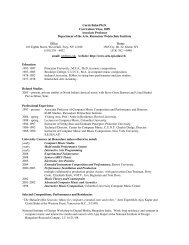
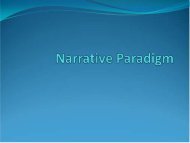
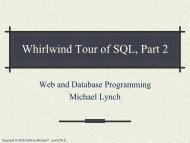
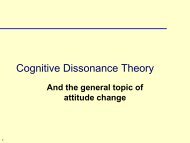
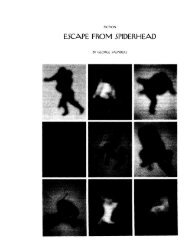
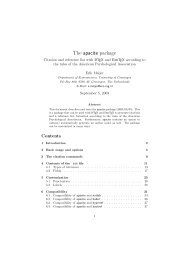
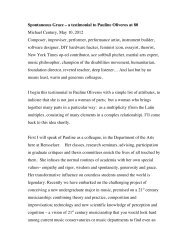

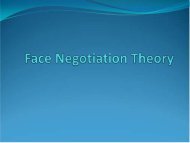
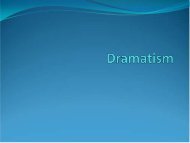

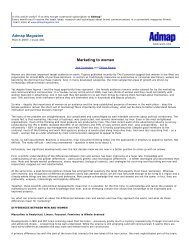

![The Game Design Document [.pdf]](https://img.yumpu.com/30117124/1/190x245/the-game-design-document-pdf.jpg?quality=85)